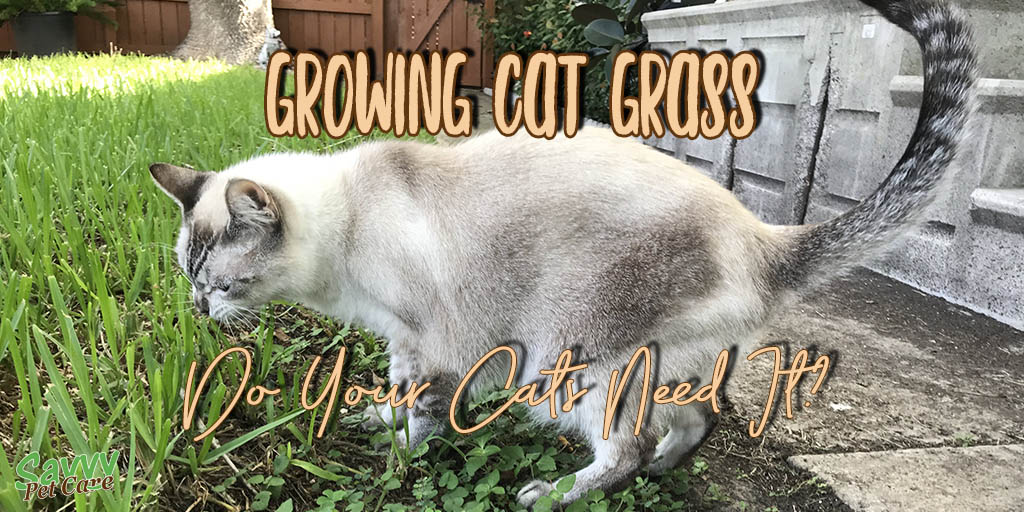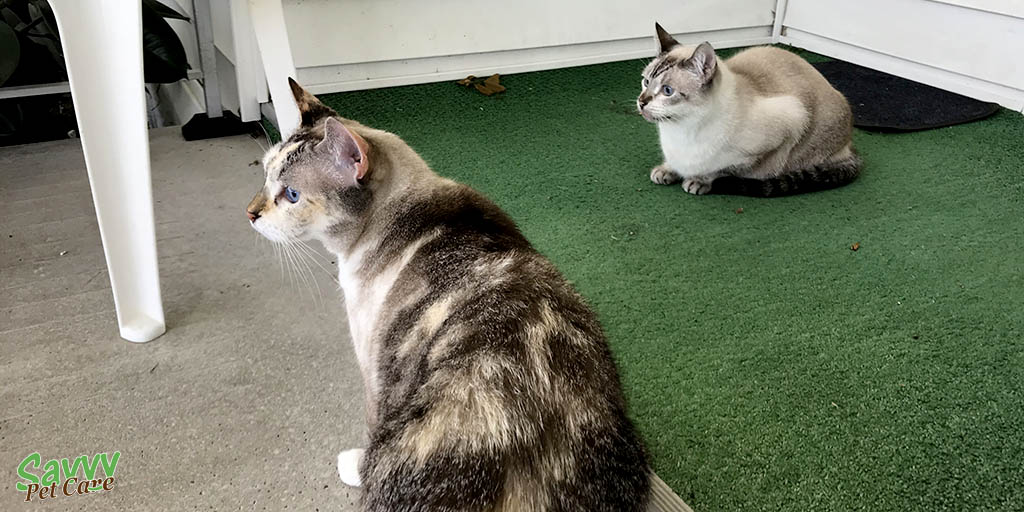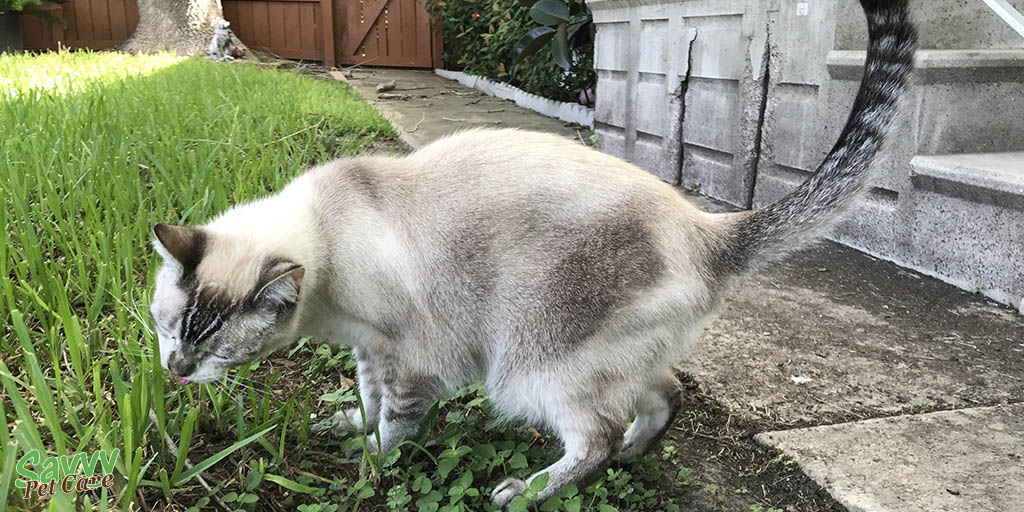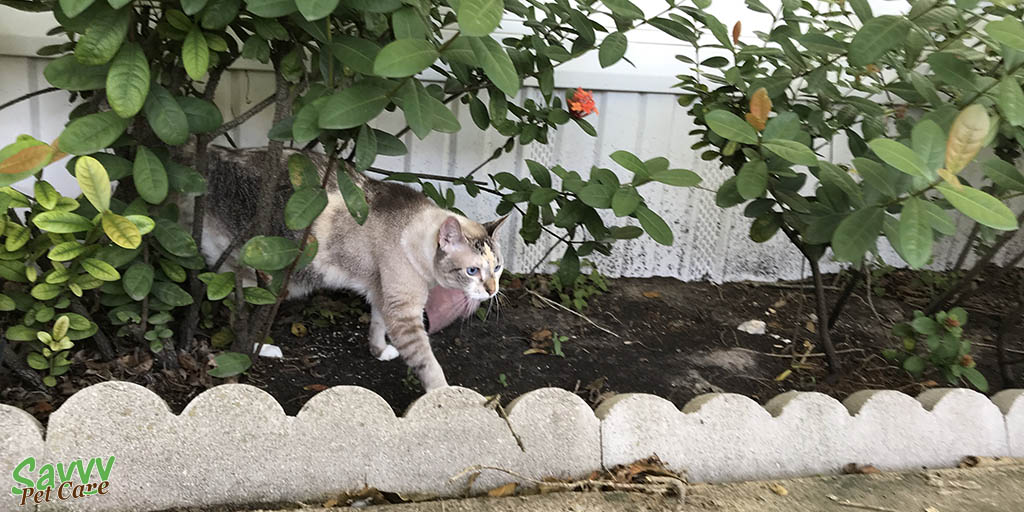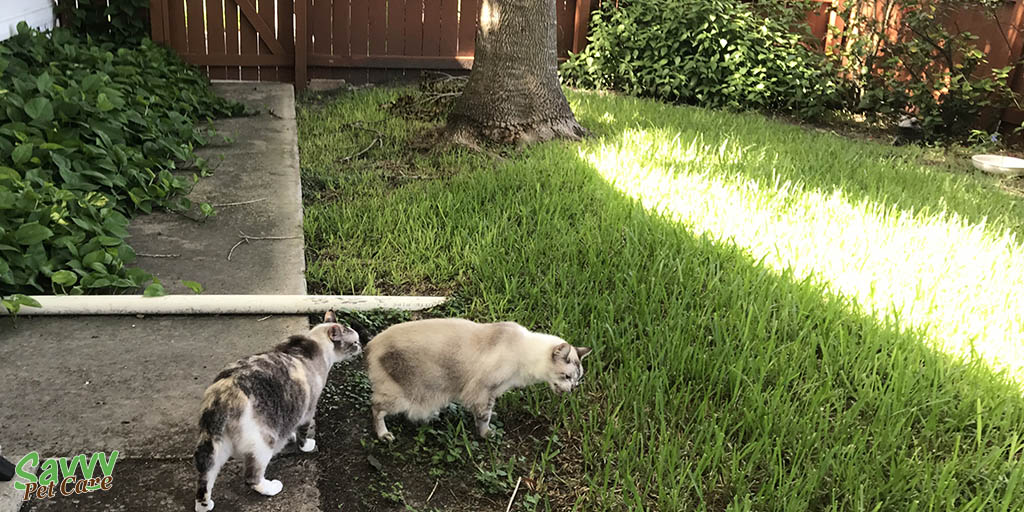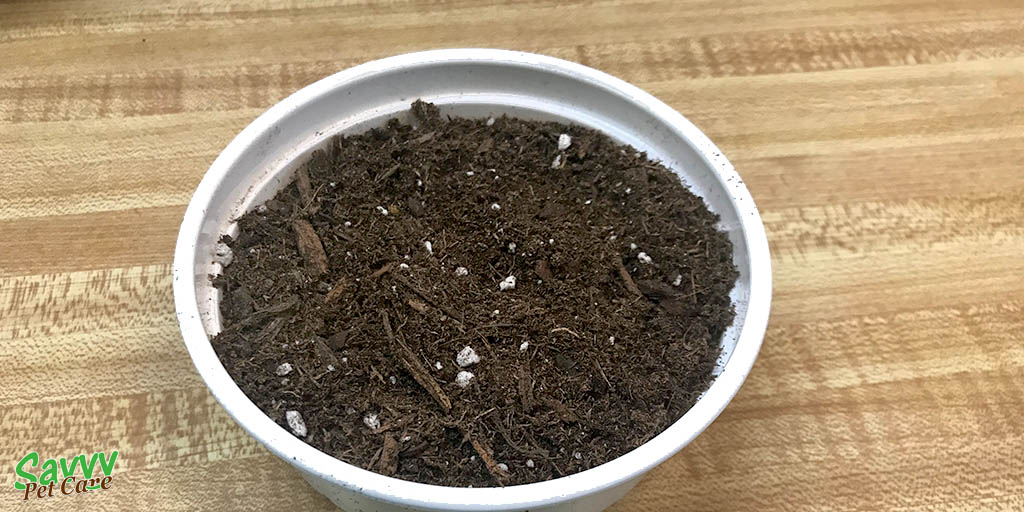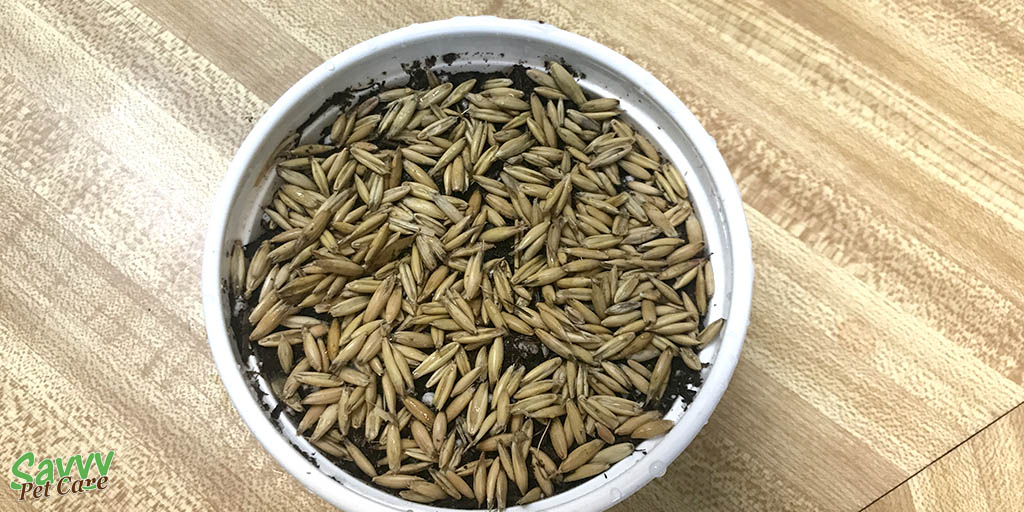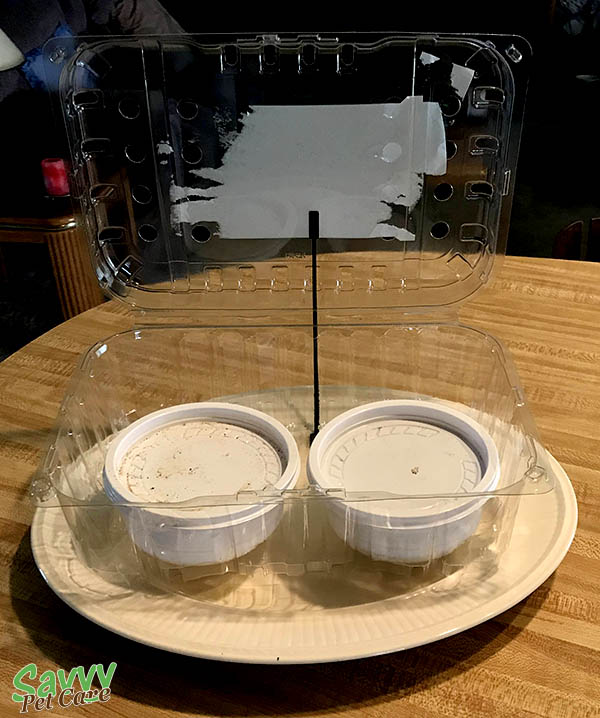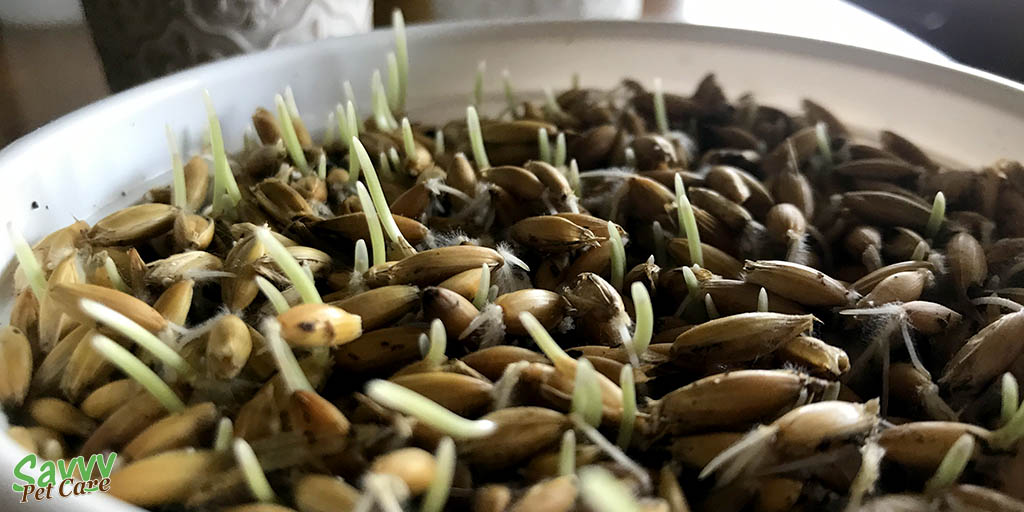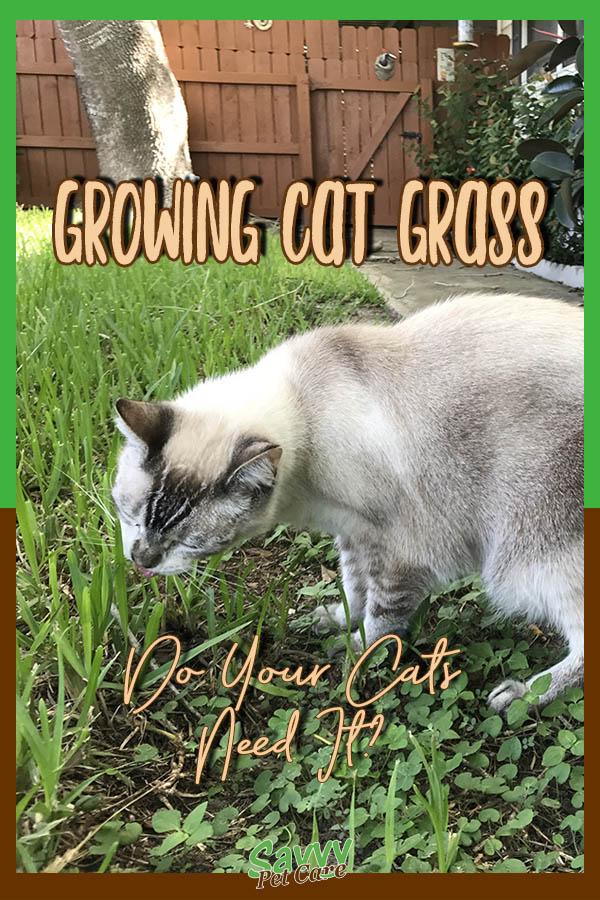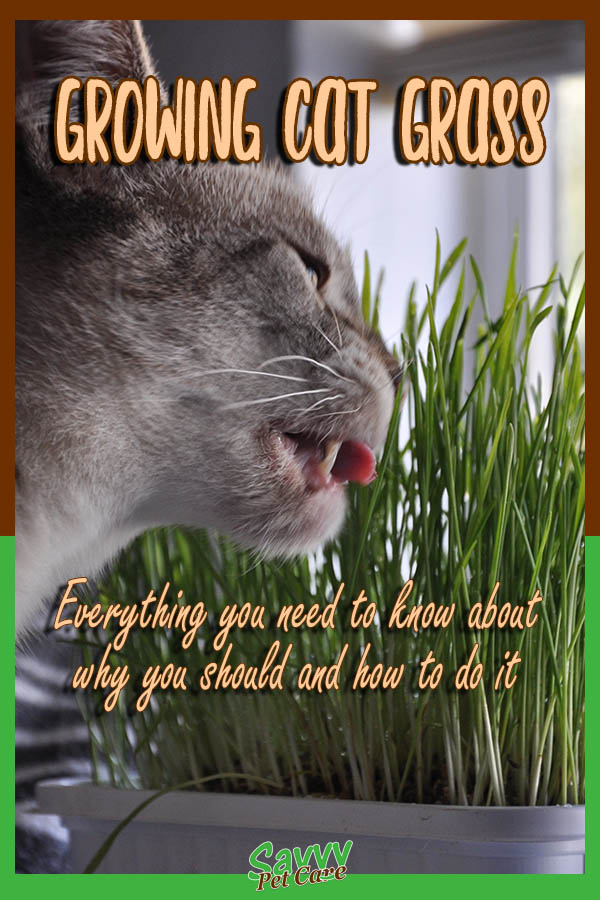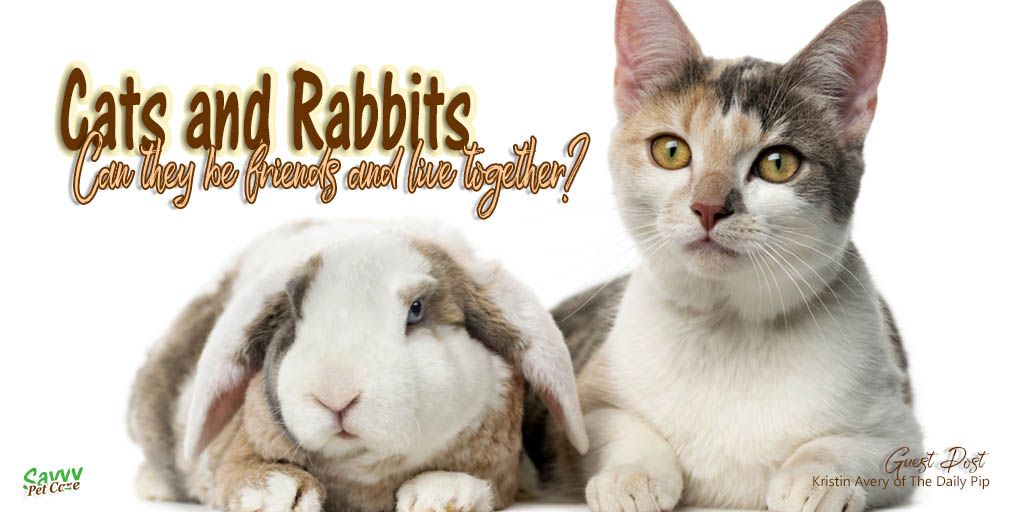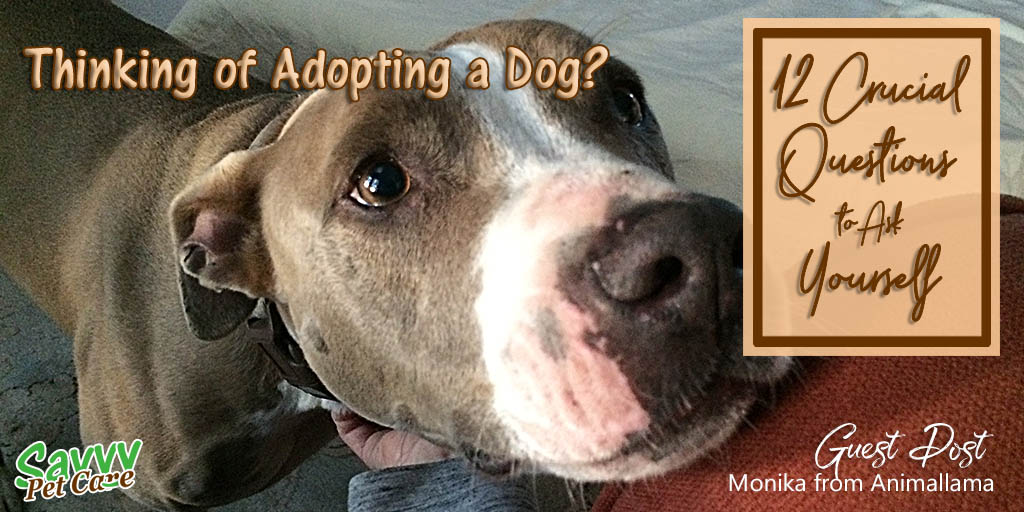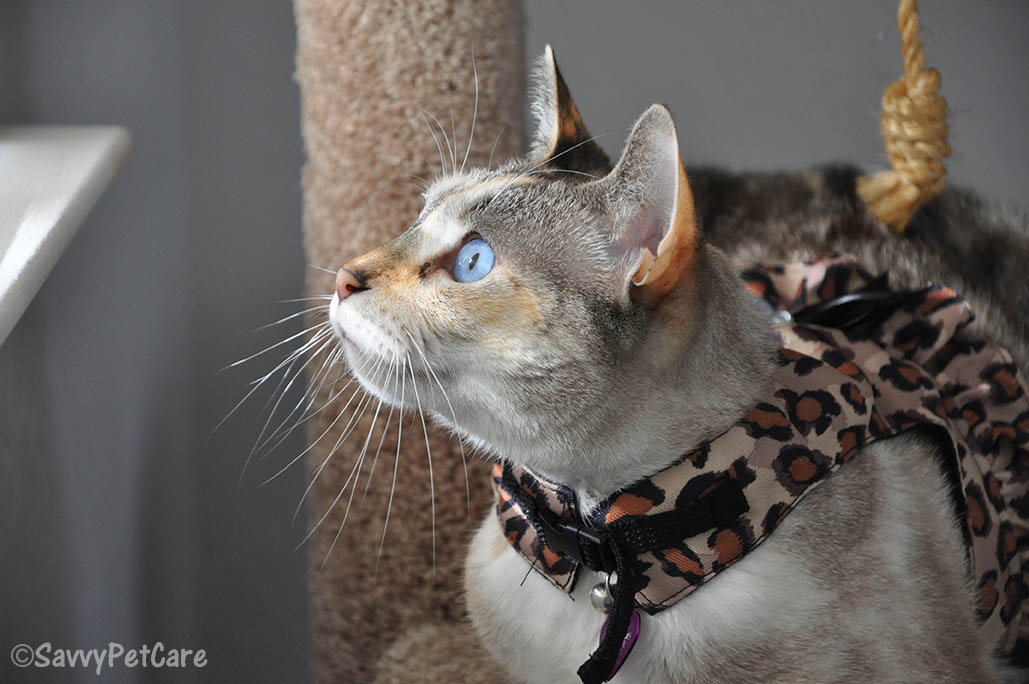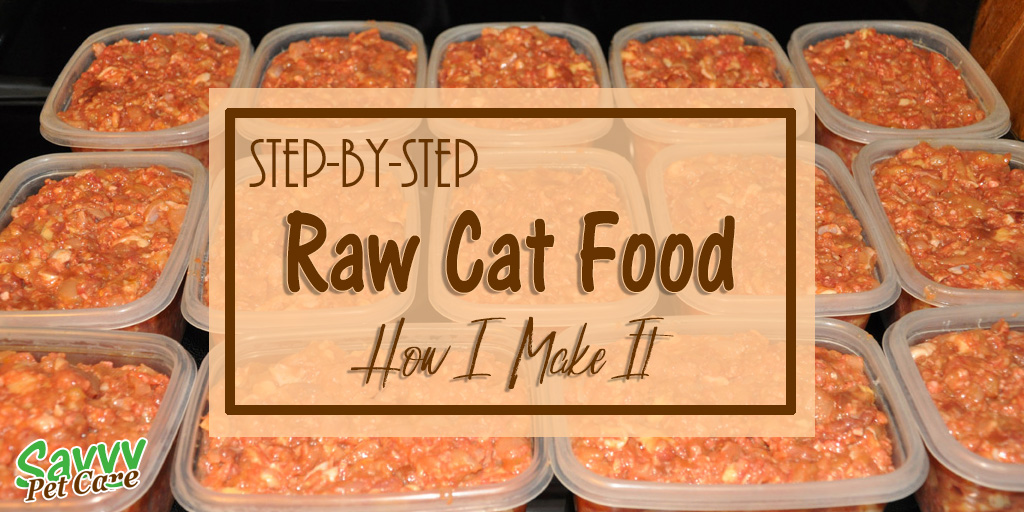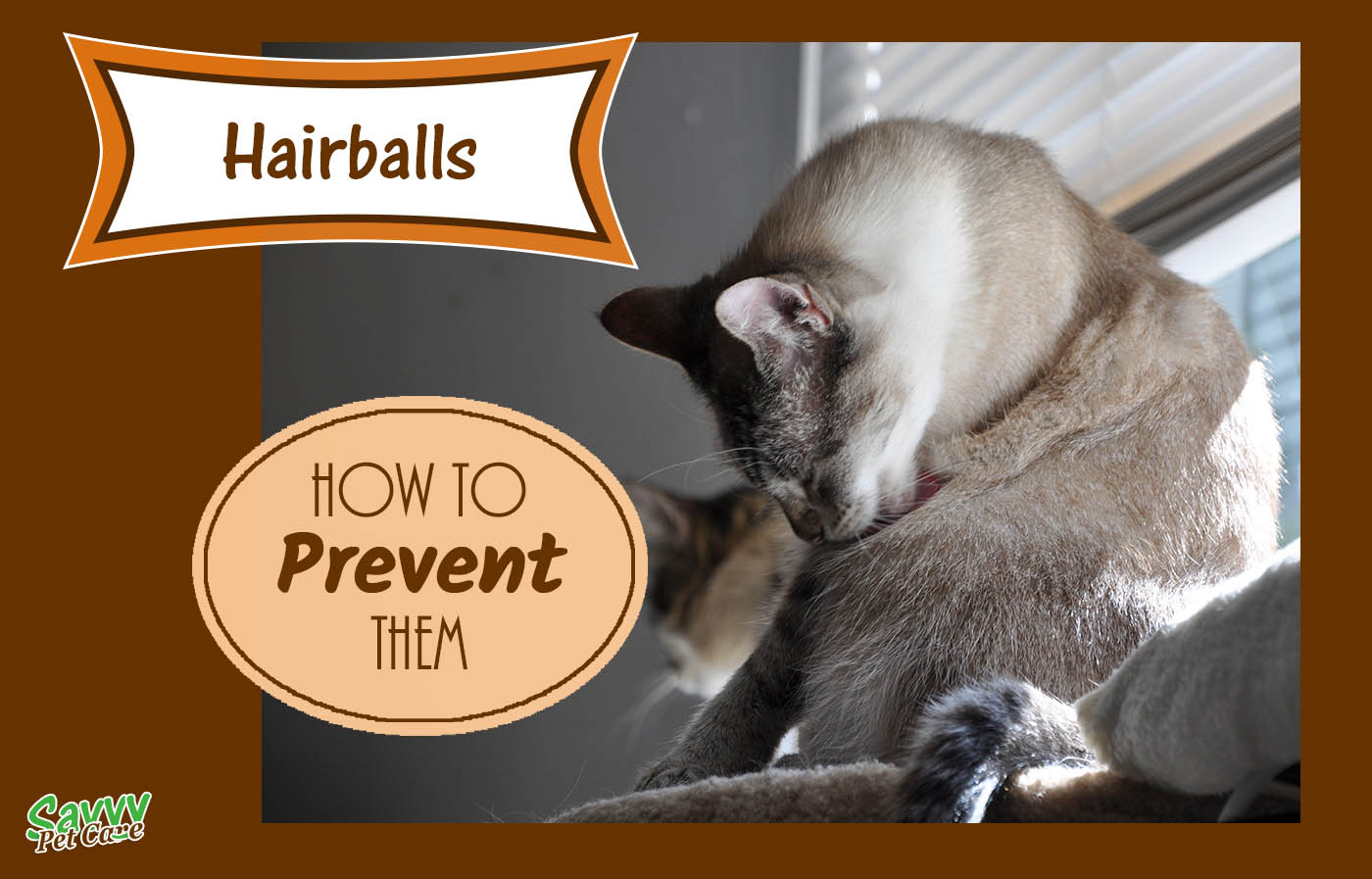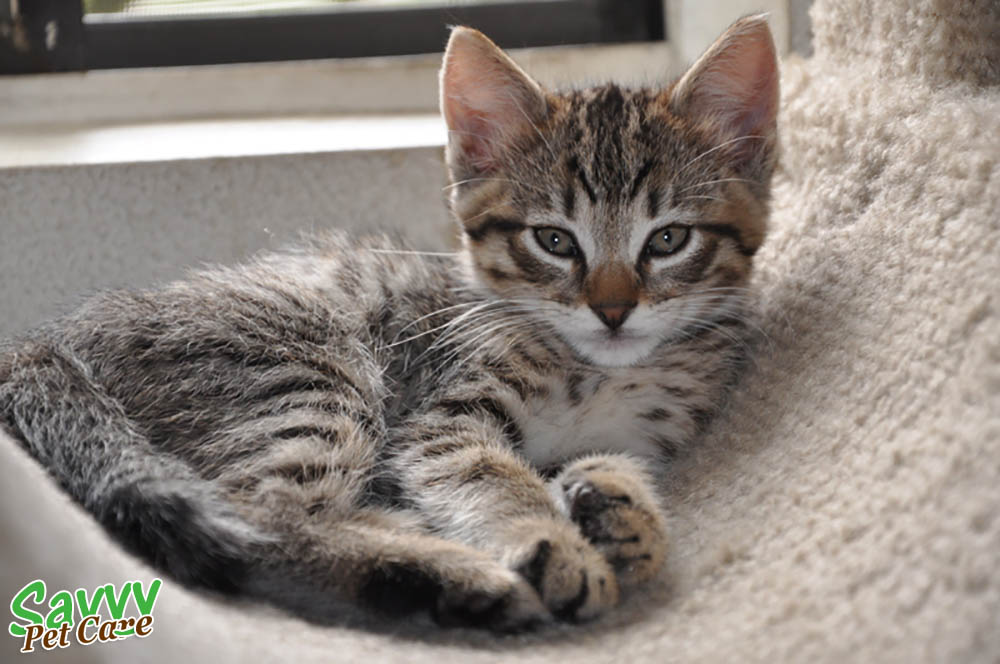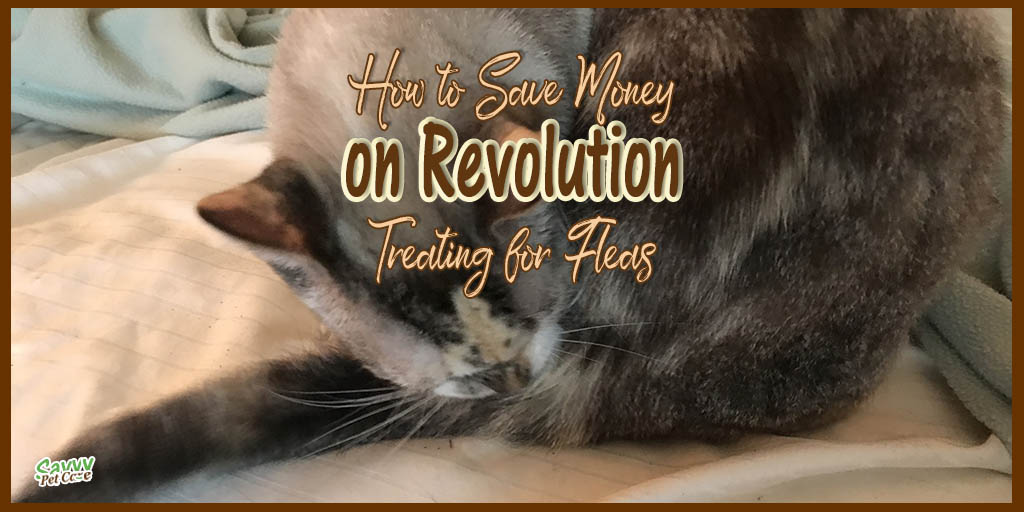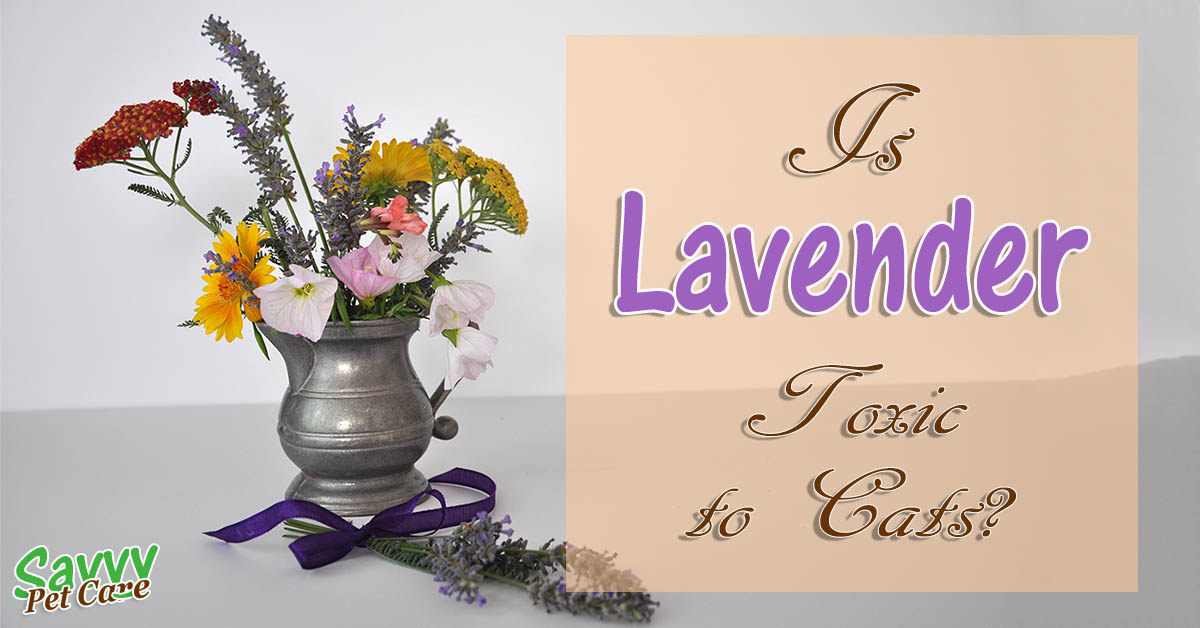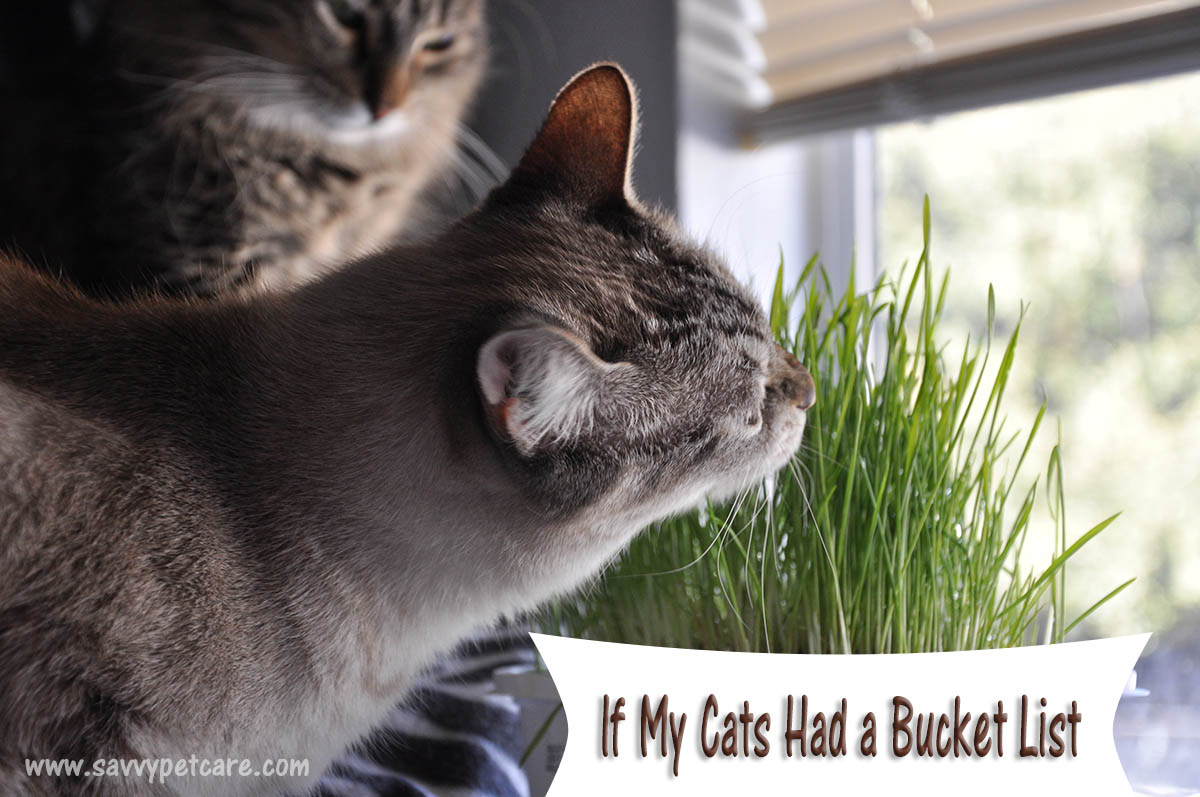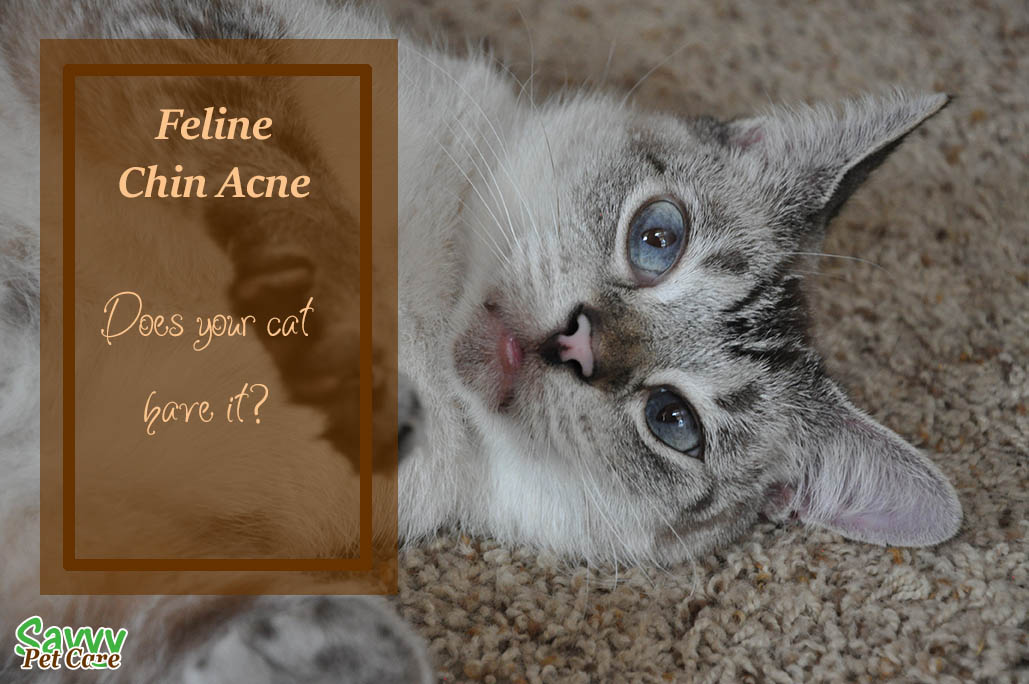My dad used to have cat grass available all the time for his cat. As soon as he put one container down for Blackbird he started another one. I continued that for a time after he passed away (the cat pre-deceased him) for my cats. Eventually I forgot about growing cat grass for them, or did I just get lazy?
Once in a while, I let my cats out in the fenced side yard while I’m out there working. Ocean runs straight to the grass and starts chomping down on the tough Bermuda grass. This prompted me to decide to start growing cat grass for them again.
After Ocean is finished with the grass and Christy is through exploring, they wait on the porch for me to finish my chores and let them back in the house.
Do ALL Cats Love Grass?
I can say from personal experience, the answer is no. Although Ocean is obsessed with it, Christy doesn’t even look at the lawn when she is outside. She prefers to prowl around under the bushes and in the dirt. She did occasionally munch on the indoor grass I used to grow but she didn’t really seem to care that much about it.
Benefits of Cat Grass
The only thing I think you can say is a “fact” about the benefits of cat grass is that it provides awesome environmental enrichment. Everything else is just conjecture or theory. If you have any doubts about that, check out this post from Texas A&M Veterinary Medicine and Biomedical Sciences.
The Theories
Even though no one is sure why cats eat grass, there are lots of theories. Many people speculate that they might like to eat grass because:
- It may help with digestion. Cats regurgitate when they eat grass because they lack the necessary enzymes to break down vegetable matter, so this may eliminate all indigestible material from the digestive tract.
- Perhaps they like the taste of the sweet juices in grass.
- It may act as a natural laxative, moving hair that wasn’t hocked up in hairballs and moved farther into the digestive tract, out the other end.
- They may need the vitamins, minerals and fiber in their diet.
- It may be instinctual from days gone by in the wild when they would have eaten whole prey that had grasses in their stomachs.
Types of Grass to Grow for Cats
Cat grass is not one particular type of grass. It can be any one of several grasses or a combination of them.
Wheat
You can share wheat grass with your cats. This is the same wheat grass that humans use in smoothies, etc. It is popular with the health conscious as it is packed full of minerals. Its 70% chlorophyll may help sweeten your cat’s breath!
Oat
Oat grass is considered to be the “true” cat grass. If a package is just labeled cat grass, it is probably oat grass seeds. Oat grass is slightly sweeter than other grasses and may appeal to more finicky cats.
Barley
Barley grass grows high and fast. This quick growing grass can reach 14″ and is a good choice for a cat who nibbles a lot or for a multi-cat household.
Rye
Rye grass is durable and flexible. If you are thinking of making a large planting grass bed for a catio that your cats can roll around and sleep in, this would be a good choice. It is shorter than the others and springs back quickly. However, rye, as well as all the cat grasses, does not do well in high heat so keep this in mind if you put it outdoors.
Growing Cat Grass for your Indoor Cats
Growing cat grass for your indoor cats is a simple process. My dad used a bunch of low plastic containers that I think originally came from kits. You can use pretty much any container. Just make sure it has drainage. Since I use lightweight plastic containers, I’m always looking for the perfect heavier container to put it in to keep it from tipping when the cats are chewing and pulling on it. My dad always put the container on a saucer and frequently I’d find it tipped over several inches from the saucer. I found a shallow bowl that I hope will serve the purpose while I continue my search.
Just a Few Easy Steps
- Fill your container about 3/4 full of potting soil. Some recommend wetting the soil with a spray bottle as you fill it but I just soak and drain it really well before I add my seeds. A spray bottle is excellent for watering after planting to keep from over-watering.
- Sprinkle a layer of seeds over the soil and lightly cover with about 1/4 inch of soil, or not. Covering them with soil is optional and I often don’t. Spray lightly with that spray bottle.
- Since my containers have lids, I just place the lids lightly over the top. If you don’t have a lid, you can cover loosely with plastic wrap or make a “greenhouse” from a large, clear plastic clamshell (from lettuce, etc.). Place the container on something to catch any additional drainage.
- Keep your seeds at room temperature (most seeds germinate best with soil temperature between 68 and 86 degrees) out of direct sunlight. Seeds should be kept damp (spray bottle) but never soaked. Keeping them too wet will cause mold to grow and ruin your grass.
- When sprouts start appearing, in about 3-7 days, remove the covering and put the container in a sunny location.
- Start watering when the soil feels dry to the touch. Make sure all excess water drains and container is not standing in water.
- Your grass is ready for your cats after about 10-14 days when it is 3-4 inches tall.
Maintenance
- Keep your grass in natural light and continue to water with a spray bottle.
- If your cats don’t nibble it down fast enough, you can trim it back to about 1″ to encourage new growth.
- When the grass wilts after a week or two, pull it out and start the process over. The grass doesn’t last a long time indoors due to inadequate sunlight. Also, if you plant in very shallow pots, like I do, the grass becomes root bound quickly.
- To have a continual supply of fresh grass, have several containers and start one every 1-2 weeks.
Isn’t There an Easier Way of Growing Cat Grass?
- You can purchase kits. Some are as simple as removing the lid, sprinkling the seeds and watering. Really, though, they are not that much different from above and more expensive than buying seed in bulk.
- Sprouting seeds without soil sounds appealing to me. I may give that a try.
- You can visit your local pet store and purchase grass that is already growing.
- For super simplicity, you can have living grass delivered to your door on a regular schedule.
How Does Cat Grass Provide Environmental Enrichment?
Cats are curious hunters. Interesting textures and attractive aromas are enticing to cats so investigating them helps alleviate boredom.
Does your cat munch on your houseplants? I don’t have houseplants because I travel a lot but, if you do, giving kitty his own plant may save yours.
Final Thoughts on Growing Cat Grass for Your Indoor Cat
I’m all for anything that will give my cats a more fulfilling, interesting life. It’s been a little slow going here making catification improvements since my dad passed. However, it is beginning to feel less disrespectful making changes to “his” house and I have a few projects planned that I will share with you in the future.
Pin It and Save for Later!





